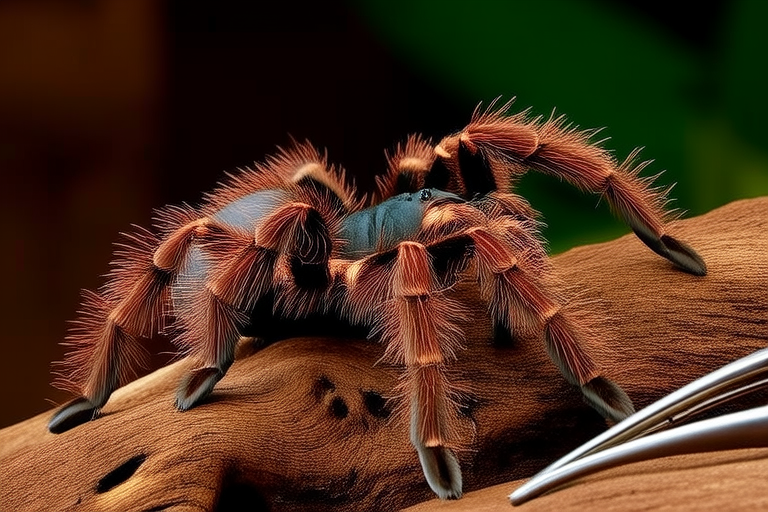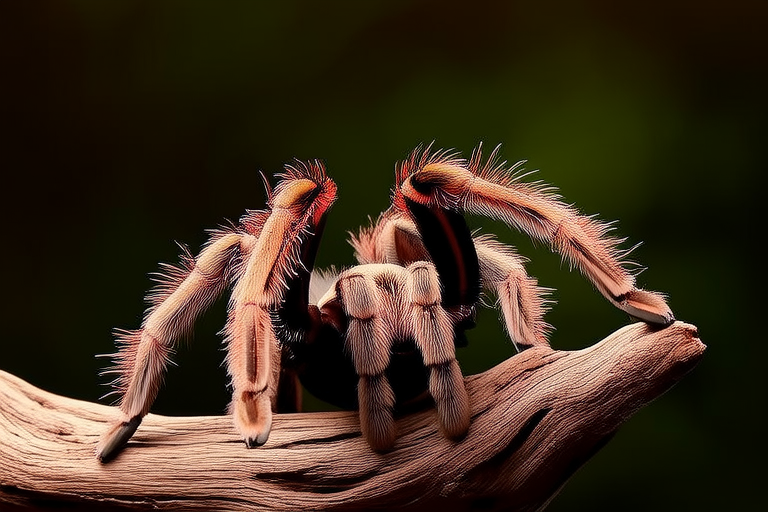
How to Care for Your Tarantula: A Beginner’s Guide
Welcome to the fascinating world of tarantulas! These unique arachnids can make rewarding pets for those willing to learn about their specific needs. This guide will help you understand how to care for your tarantula properly, ensuring both its well-being and your enjoyment as an owner.
Understanding Your Tarantula
Tarantulas are large spiders native to various parts of the world, including deserts, rainforests, and grasslands. They come in many species, each with distinct care requirements. Before bringing one home, research the particular species you’re interested in to ensure it suits your lifestyle and living space.
Habitat Setup
Creating a safe and comfortable environment is crucial for your tarantula’s health. Start by selecting an appropriately sized tank; a general rule is that the enclosure should be at least three times the length of the tarantula in width and height. For example, if your tarantula is six inches long, its tank should be at least 18 inches wide and tall.
The enclosure must have a secure lid to prevent escapes. Ensure there are ventilation holes but that the lid cannot be pushed off or popped open easily.
Substrate
The substrate (the material covering the bottom of the tank) plays a vital role in maintaining proper humidity levels and providing a natural burrowing environment. Suitable substrates include coconut fiber, peat moss, and reptile bark. A mix of these materials can also work well. Aim for a depth of two to four inches, depending on the species’ burrowing habits.
Decorations and Hiding Spots
Provide hiding spots such as cork bark or half logs to mimic the tarantula’s natural environment. These shelters offer security and reduce stress. Additionally, adding live or silk plants enhances the enclosure aesthetically and provides more hiding spaces.
Temperature and Humidity Requirements
Maintaining the correct temperature and humidity levels is essential for your tarantula’s health. Different species have varying needs, so consult reliable sources or your pet store for specifics. Generally, temperatures between 75°F and 85°F (24°C to 29°C) are suitable, while humidity levels range from 60% to 80%, depending on the species.
Use a hygrometer to measure humidity and a thermometer to monitor temperature within the enclosure. Adjust these factors by misting the substrate or using a heating pad placed under one side of the tank.
Feeding Habits
Feed your tarantula once or twice a week, offering appropriately sized prey like crickets, mealworms, or small roaches. The prey item should be no larger than the space between the spider’s eyes. Gut-load the insects with nutritious food before feeding them to your tarantula to enhance its diet.
Avoid overfeeding, as this can lead to obesity and other health issues. Remove any uneaten prey after 24 hours to prevent potential harm to your tarantula.
Handling Tips
While tarantulas may seem intimidating, they can be handled safely with the right approach. Always wash your hands before and after handling to avoid transferring oils or chemicals onto the tarantula.
Approach slowly and gently place your hand in front of the tarantula. Allow it to walk onto your hand rather than picking it up. Keep handling sessions short and avoid sudden movements. Some tarantulas may flick urticating hairs when threatened, which can cause skin irritation. If this occurs, rinse the affected area with water.
Health Concerns
Regularly observe your tarantula for signs of illness or injury. Common health issues include mites, respiratory problems, and molting complications. Mites can be detected by noticing tiny moving dots on the tarantula or in the substrate. Respiratory issues might manifest as difficulty breathing or a swollen abdomen. Molting complications occur when the tarantula struggles to shed its exoskeleton fully.
If you notice any concerning symptoms, consult a veterinarian specializing in exotic animals for guidance. Early intervention is crucial for effective treatment.
Signs of a Healthy Tarantula
A healthy tarantula displays vibrant coloration, active movement, and regular eating patterns. It should molt successfully every few months, shedding its exoskeleton completely without complications. Additionally, look out for alertness and responsiveness to stimuli.
Safety and Responsibility
Owning a tarantula requires commitment and responsibility. Always handle your pet with care and respect its boundaries. Never leave children unsupervised around tarantulas due to the potential for accidents or mishandling.
Ensure your tarantula has a clean and appropriately maintained habitat. Regularly clean the enclosure, replacing the substrate as needed, and inspect for signs of pests or disease.
Consider the long-term commitment involved in tarantula ownership. Many species live 15 years or longer, requiring consistent care throughout their lives.
Conclusion
Caring for a tarantula can be a rewarding experience, offering insights into the behavior and biology of these fascinating creatures. By following this guide and staying informed about your tarantula’s specific needs, you can provide a safe and comfortable home for your pet. Remember, responsible ownership involves understanding and meeting your tarantula’s requirements while respecting its nature.





